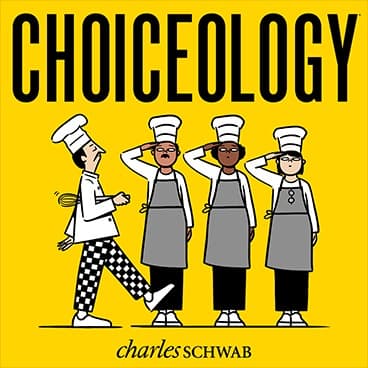Recipe for Success: With Guests Simon Rogan & Michele Gelfand
Are rules made to be followed—or meant to be broken?
Often, the answer will depend on culture and the context in which people make decisions.
In this episode of Choiceology with Katy Milkman, we look at how carefully people in different contexts follow social norms, rules, and procedures. We'll also see how strict and relaxed cultures affect the quality of our decisions—and how to find the sweet spot depending on your goals.
Professional kitchens have historically been challenging work environments: high standards, long hours with low pay, and a strong hierarchy of cooks in the kitchen. "Yes, chef" was the only appropriate reply to higher-ranked chefs when Simon Rogan came through the ranks during the 1980s and '90s—a time when kitchen culture was tight and uncompromising. Today, Simon is working hard to change that culture across his restaurant group.
Simon Rogan is a chef and restaurateur in the U.K. whose flagship restaurant, L'Enclume, has three Michelin stars and also holds a Michelin Green Star for its sustainable practices. Simon also runs a culinary program for young chefs called the Academy by Simon Rogan.
Next, Katy speaks with Michele Gelfand about her research on tight and loose cultures and their impact on decision-making in different contexts.
You can learn more from Michele’s paper “Differences Between Tight and Loose Cultures” and take the quiz to determine if you tend to lean tight or loose.
Michele Gelfand is the John H. Scully Professor in Cross-Cultural Management and Organizational Behavior at Stanford University. She’s also a member of the National Academy of Sciences and the author of the book Rule Makers, Rule Breakers: How Tight and Loose Cultures Wire Our World.
If you enjoy the show, please leave a rating or review on Apple Podcasts.
Learn more about behavioral finance.
The comments, views, and opinions expressed in the presentation are those of the speakers and do not necessarily represent the views of Charles Schwab.
Data contained herein from third party providers is obtained from what are considered reliable source. However, its accuracy, completeness or reliability cannot be guaranteed and Charles Schwab & Co. expressly disclaims any liability, including incidental or consequential damages, arising from errors or omissions in this publication.
All corporate names and market data shown above are for illustrative purposes only and are not a recommendation, offer to sell, or a solicitation of an offer to buy any security. Supporting documentation for any claims or statistical information is available upon request.
Investing involves risk including loss of principal.
The book How to Change: The Science of Getting from Where You Are to Where You Want to Be is not affiliated with, sponsored by, or endorsed by Charles Schwab & Co., Inc. (CS&Co.). Charles Schwab & Co., Inc. (CS&Co.) has not reviewed the book and makes no representations about its content.
Apple, the Apple logo, iPad, iPhone, and Apple Podcasts are trademarks of Apple Inc., registered in the U.S. and other countries. App Store is a service mark of Apple Inc.
Spotify and the Spotify logo are registered trademarks of Spotify AB.



